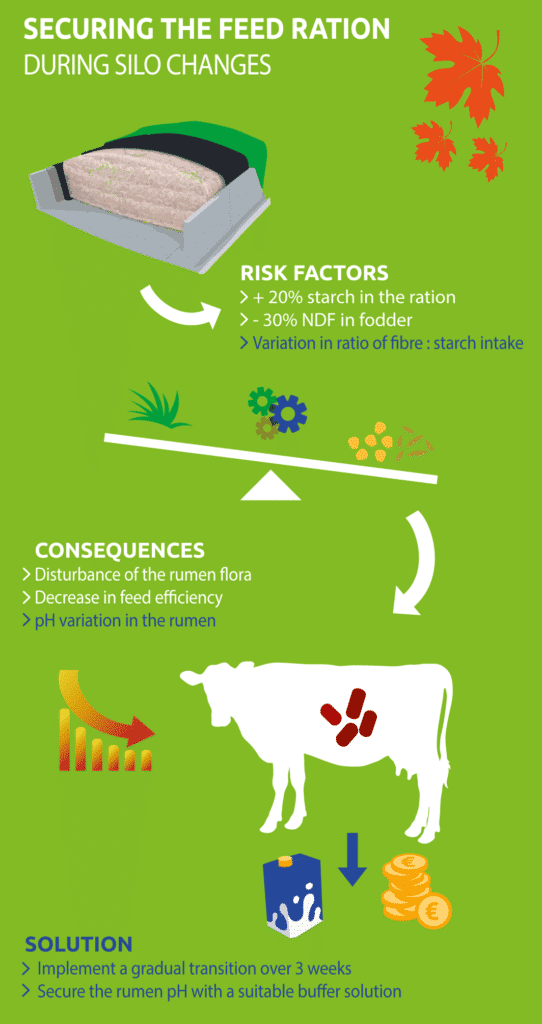
SECURE THE RATION DURING SILO CHANGES
In autumn, the opening of a new silo can be linked to a drop of production and fat content.
Corn silage quality, more or less rich in starch, fibers and sugars, can be the cause. Changes in forage quality have a significant impact on the balance of the ration and lead to a disturbance of the bacterial flora in the rumen.
Variation in NDF* and starch content
It is important to re-evaluate the overall parameters of the ration. As soon as the starch content of the ration exceeds 20% of the dry matter (DM), the NDF content of the forages is below 30% DM and the NDF content of the total ration is below 35% DM, the risk of acidosis increases.
Three weeks to adapt
The ruminal flora, which enables the fermentation and digestion of the ration, continuously adapts to the substrate arriving in the rumen. It is estimated that it takes the rumen environment 3 weeks to adapt to major changes in the ration.
*NDF : Neutral Detergent Fiber


OUR ADVICE
Secure the ruminal pH
The variation of starch and NDF contents as well as the disturbance of the bacterial flora lead to fluctuations of the ruminal pH. These fluctuations decrease feed efficiency and favor subclinical acidosis. It is therefore important to secure the ration by providing a buffer or alkalinizing solution.
If it is often recommended to add sodium bicarbonate at a rate of 250g/cow/day, but other solutions exist. The unique and powerful action of pHix-up allows: an increase and a long-lasting maintenance of the rumen pH, to secure the ruminal environment during transition periods.


– FAST increase and SUSTAINABLE maintenance of rumen pH
– SECURE RUMINAL ENVIRONMENT during transition periods.

